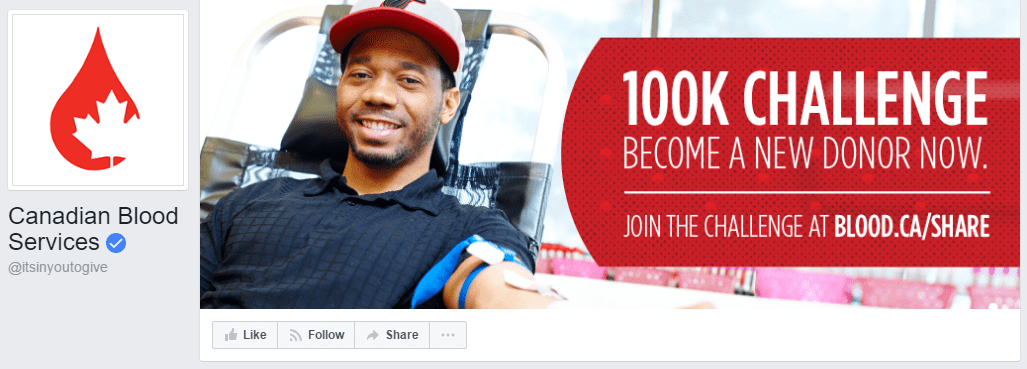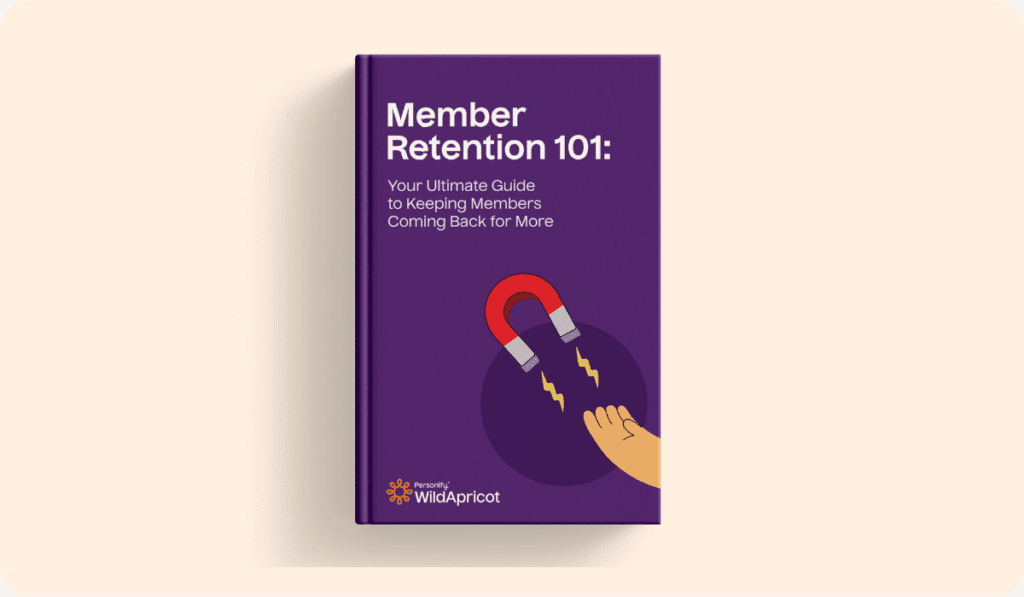Let’s face it: it’s basically a requirement for your nonprofit to be on Facebook these days.
And there are definitely a lot of advantages. Just take this story of how Free the Children used Facebook likes to raise $2.4 million for their charity. Or how Patty Foley, the Membership Chairperson of Newington Community Television uses Facebook to find new volunteers.
Plus, regardless of whether or not you think you have time for it, some well-intentioned board member is sure to come ask you about it if you don’t have one.
But don’t worry.
I know you don’t have time to deal with that — regardless of what Janet thinks.
(If she has so much time, why doesn’t she just run it herself? Sigh.)
So, I’m here to show you how to set up your profile, make a posting strategy, and more.
Even better, it’ll take you less than half a day, so you can quickly stop worrying about likes and get back to more important marketing questions — like which colour you should use for the cover of your annual report.
In this post, I will cover:
1. Set up Your Nonprofit’s Facebook Page
Time: 1 hour
First things first, let’s set up your Facebook page.
Here is everything you need to know about setting up a page with everything your fans need to know about you – and everything that will encourage them to support you!
1. Go to Facebook for Business.
Unlike many other platforms, you will create and manage your page through your personal profile. After you log on, go to Facebook for Business. Hover over the “Create Ad” button on the upper right corner and then click on “Create a page.”

2. Choose your business classification.
As a nonprofit or organization, you will click “Get Started” under “Business or Brand.”

Your Page Name should simply be the name of your organization. Next, select the category that most closely fits your organization. To select the Nonprofit Organization category for your Page, start typing into the Category box and select Nonprofit Organization when it appears.

3. Upload a profile picture and cover photo.
Many organizations use their logo as its profile picture. You can do so, or use an image that depicts the kind of work you do.
For example, if you work with animals, you can use a picture of an animal, or if you work with mothers, you can use an image of a mother and child. Using an image instead of a logo gives your page a more personal feel, and will help your page blend in seamlessly with your fan’s friend and family posts on their feed.
When creating a cover photo, be sure to use optimal dimensions: 315 pixels tall by 851 pixels wide. Keep this image simple; don’t feel like you need to use a lot (or any text at all). There are plenty of places in your profile to use writing to share your work and mission.
Nonprofits Facebook Banner Ideas
Here are three great ways you can create/use a Facebook banner to help grow your organization:
1. Event Promotion
The American Counseling Association changed their cover photo to include information about an upcoming event. Now everyone who comes to their Facebook Page will know about their conference and the ACA will likely see a boost in event registrants.

2. Membership or Cause Promotion
In this example, Canadian Blood Services added a CTA (call to action) on their cover photo, challenging all their Facebook visitors to become a donor. They’ve also included a website link in the image, making it easy for someone to find out more information.
In a similar way, you can use your cover photo to ask people to join your organization and tell them where they can become a member.

3. Member Engagement
QUT Tennis Club used a picture of their members for their cover photo. Besides being a great photo, this does two more things to help the club:
- The people in the photo will likely share QUT’s Page with their Facebook friends, since photos have a super high interaction rate on Facebook. In turn, this will help boost member engagement with your current followers, especially those in the photo.
- A photo of real members lets potential members know your organization is personable, inviting, and most importantly, that your organization cares about its members.
Fill Your Nonprofit’s About Section Completely
This can be found on the left side of the page. This is where you can provide all the information your audience should know about your organization. Be sure to complete the “Our Story” section, which will give your audience insight into your mission and how it all got started.

Get Your First Followers
Now you have a basic Facebook Page set up for your nonprofit! How does that feel?
But don’t rest on your laurels just yet. It’s time to start getting followers who will like your Page (don’t forget to like the Page yourself!).
Followers who like your Facebook Page will see your photos and posts in their Facebook feed whenever you have a new update.
Here are four simple things you can do to get more followers:
- Use Facebook search to invite your Facebook friends to like the Page. This is located on the bottom right of your Page. Simply type a friend’s name and click “Invite”. These friends will receive a notification inviting them to like your Page.

- Email your current subscribers and members with a link to your Facebook Page and ask them to like it. You can find the link to your Facebook Page in the URL as shown below. Simple copy and paste this text into an email.

- Add a Facebook link to your website. It’s a good idea to place this link where your contact information is located. The most visually engaging way to do this is to make the link an image of Facebook’s logo, like how it’s shown below.

- Include a Facebook feed on your website’s homepage. That way, all your website visitors can see your updates and like your Facebook Page right from your website. Here’s an example from The Webb Mountain Discover Zone. Simply scroll down their homepage to see their Facebook feed.If you want to add a Facebook feed onto your website, visit Facebook for Developers, which shows you the steps. However, you may need a little technical expertise to do this.
- Note: Webb Mountain Discovery Zone added their Facebook feed using WildApricot’s drag-and-drop website builder made for nonprofits.
Now that you have your Facebook page set up and you have some followers, you’re ready to post.
(And when you’re ready to create a Facebook Group for your nonprofit, check out this post to get inspired!)
2. Create a Facebook Posting Strategy
Time: 2 hours
As you may already know, haphazard posting is not only time-consuming, it won’t help you reach your goals.
If you post regularly, your posts are much more likely to show up on your supporters’ feeds. They’re also more likely to feel personally invested in your organization if they can follow along with your successes and struggles.
That’s why before you start posting, you should create a simple post strategy that includes a plan tailored to succeed on Facebook as well as content that supports your efforts.
(This also gives you a justification NOT to post when other staff members come to you with last-minute requests. You’re welcome!)
If your nonprofit is active on other social platforms, such as Instagram, your Facebook strategy should align with your overall social media strategy. Check out these 5 examples of successful nonprofit social media strategies for some inspiration.
What Your Platform Plan Should Include
Start creating your platform plan by understanding what kind of content does well on Facebook. To figure that out, click around and see which posts from other organizations in your niche are getting the most shares and likes, as well as seeing what other pages your supporters are likely to follow and what kind of content they’re posting.
From there, determine the purpose of your Facebook page, the amount of posts you plan to post a week, and your budget, as well as the kinds of content you will focus on. Asking these questions can help you create a clear roadmap to a successful Facebook page. Finally, Facebook is a social network, so indicate how you plan to engage with your fans.
For example, maybe you can manage to post three times a week. Through a bit of research and by looking at your previous analytics, you learned that it’s challenging to reach people through organic posts, that images with little text perform better than those that are text-heavy, and that you are more likely to reach your audiences between the ages of 40 to 64 years old.
Your platform strategy may look something like this:
Purpose: To communicate with current and potential supporters over the age of 40
Cadence: 3x/week
Paid Spend: $25/week
Content: Focus on videos and images. Share client stories, impact, organization activities and victories, and behind-the-scene staff features.
Engagement: Tag applicable partners, invite those who like posts to like or follow page, respond to all comments and messages within 24 hours
As you can see, this plan doesn’t have to be complicated, especially if you don’t have much time to spend on it.
How to Create a Content Plan
Next, you should create content buckets to guide the kinds of posts you will create. There are a range of media you can use for each bucket, including images, text overlay (text over pictures), simple animation/gifs, and video.
Here are eight content buckets for you to consider.
- Inspire: Highlight your clients and show impact. Thank your donors often.
- Introduce: Feature your staff, board, volunteers, and partners. Show the human side of your organization.
- Inform: Educate your audience on your issue. Be a go-to source for news in your sector.
- Entertain: Post fun and light-hearted posts, like memes or GIFs, that relate back to your organization’s struggles.
- Interact: Ask questions, share surveys, or hold contests.
- Update: Share your organization’s news, upcoming events and activities, and what’s going on behind the scenes.
- Call-to-Action: Make a direct ask to donate, volunteer, join your email list, sign a petition, or apply for a job opening.
- User-Generated Content: If your donors, volunteers, or the population you serve is creating content about you, all you have to do is reshare it! Keep an eye out for mentions of your name on social media so that you can capture these great opportunities, or simply ask your supporters to share why they love your organization. Many people will be happy to do so.
We suggest planning out your content anywhere from a week or a month in advance. Set a day aside to focus on content planning, creation, and scheduling — which will allow you to then focus on other tasks. You can also check out some of these great social media scheduling tools to help you save time throughout the week.
Five Inspiring Posts from Nonprofits on Facebook
Do you need a bit of inspiration before choosing content buckets? Check out these posts. Many of these will take you five minutes or less to create.
-
Host a recurring Facebook Live video. Principal Belinda George of Homer Drive Elementary School reads a bedtime story to her students (and hundreds of others across the globe!) every Tuesday evening for its weekly Tucked In Tuesdays.

-
Post about a trending topic, whether on the news, a holiday, or a national observance. For example, LiveOnNY tied in organ donation into this Halloween post.

-
Use inspirational quotes. UNICEF, one of the most popular nonprofit Facebook pages, often posts inspirational quotes from youth across the globe.

-
Quiz your followers. World Wildlife Fund engaged with its followers by quizzing them on their wildlife knowledge. Do you know the difference between a dolphin and a porpoise? (I didn’t before looking at this quiz!) You can create posts like this either in Facebook itself using the poll function, or create a blog post on the topic to which you can then direct your audience.

-
Thank your followers. You can thank them for attending an event the following day, donating, or simply for showing up and interacting with your Facebook page. SHOFCO made a lovely thank you post following #GivingTuesday.

3. Make Facebook Live Videos
Time: no extra time if streaming during events
Videos continue to be one of the most popular and high performing media to use on Facebook. While the average engagement rate for Facebook posts is 3.6%, video posts have a double average engagement rate of 6.13%. In fact, 60% of users who watch digital videos do so on Facebook, second only to YouTube.
The easiest way to incorporate videos into your posts is to post live videos, since they don’t require as much scripting or any editing. You can live stream events, plan live-streamed Q&As, or demonstrations.
Hosting a Facebook Live is simple. Here is how you can go live straight from your smartphone:
-
Go to the ‘create post’ section of your page and click the Live button. If you haven’t done so already, give Facebook access to your camera and microphone when prompted.

-
Write an interesting description of what will take place in the Live video.

-
Click the blue “Start Live Video” button to start broadcasting.
-
Click “Finish” when your live stream is complete.
How to Host a Successful Live Video
Make the most of your Live videos. Facebook gives these five tips for hosting successful live videos.
- Go live with a strong connection. Ensure your broadcast is as clear, high-resolution, and as stable as possible.
- Engage with your audience. Facebook prioritizes content that sparks conversations and includes meaningful interactions between real people. Try these engagement methods:
- Say hello to commenters by name and reply to their comments.
- Answer questions on-air.
- Pin great comments to the top of the chat.
- Encourage event participants to engage with the audience via the live comments.
- Broadcast for more extended periods to reach more people. Facebook prioritizes longer videos (over three minutes) that inspire people to continue watching. For Live broadcasts, the longer you are Live, the more likely people will discover the video.
- Tell people ahead of time when you’re going to broadcast. Build anticipation by letting people know when you’ll be broadcasting live.
- Be creative and go Live often. Try different types of broadcasts, and go live frequently to keep your audience engaged. You can also use insights available in the Creator Studio to see what kind of content performs best and optimize your videos to focus on those topics. You can also switch up your posting time to see if your audience prefers one time over another.
4. Create Facebook Events
Time: 15 minutes
When planning an event for your organization, don’t forget to include a Facebook event. Even if you’ve already sent out an email blast, the more reminders to your audience the better! Plus, since potential attendees’ friends can see that they’ve clicked “Interested” or “Attending”, you have the chance to reach a larger audience who may not already be following your page.
Here are the steps:
-
Go to the Facebook Events page, and click the Create Event button at the bottom-left of your screen. Select “Create Public Event” from the drop-down menu to make a public, not-invite-only event.

-
Select your brand’s Facebook page. This will make sure the event is linked to your page so it can be promoted appropriately.
-
Complete all of the info on the screen. You can include all of the vital information about your event, including event images and details. When choosing an image, be sure to use a vivid and compelling image with little to no text.

-
Use keywords that will help people discover your event, like “panel,” “auction,” or “health fair.”
-
If you have one, add a link to your registration or ticket purchase page.
-
Add cohosts, like other organizations, committee chairs, or the event space. This ensures they’ll get a notification when the event is created, and will then be prompted to share your event as well (and who doesn’t love additional promotion?).
-
Publish and promote your event!
Four Ways to Promote Your Event
- Share the event frequently from your Facebook page, and pin the post to the top of your page.
- Use other channels, like email and other social media sites, to drive potential attendees there.
- Use the “Invite” tab on your event to invite your organization’s network and expected guests.
- Consider running an ad to promote your event. Read more about how to do that in this post.
5. Create Facebook Nonprofit Ads
Time: 1 hour
Facebook prioritizes friends and family posts over brands, making it harder and harder for nonprofit Facebook posts to be seen organically.
So, if you have a little budget to spare or experiment with, include boosting posts or running Facebook ads in your Facebook strategy to get more eyes on your content (and thus more potential donors, members, or event attendees).
Learning how to create Facebook nonprofit ads is an incredible marketing skill to have. For a thorough guide on Facebook Ads, check out our free, on-demand webinar “How to Start Using Facebook Ads to Reach a Big Audience with a Small Budget” and visit Hubspot’s Facebook Paid Ad Checklist.
For a quick glimpse at the process, here is an overview of how to create a Facebook Ad.
- Start creating an ad through Facebook’s Ads Manager. To create a new campaign, ad set, or ad through the Facebook Ad Manager, choose the type of ad you want to create and click the green “Create” button.
- Select an objective. There are many to choose from, including brand awareness, reach, website traffic, lead generation, and conversions.
- For example, if you want your ad to be seen by as many people as possible, you will want to choose reach as an objective. If you’re going to direct people to your website or a blog post, you will indicate website traffic as your objective.
- Choose your audience. You will be able to create a particular target audience for your ad. Facebook provides several targeting options, including location, age, gender, languages, relationship, education, financial, interests, and more.
- Creating the right custom audience will take lots of testing, trial, and error. The longer you create ads, the more successful your targeting will be.
- Set your budget. You will have the option to set a daily budget or a lifetime budget.
- Create your ad! Now for the fun part. You will create an advertisement based on the objective you set. Facebook shared these tips to get the most engagement from your ads:
- Use vertical videos, which is how most people use their phones.
- Avoid text on images. Instead, use the text/headline/link description boxes.
- Keep your text short, clear, and concise to get your message across.
- Add multiple images using the carousel format.
- Ads with movement stand out in the News Feed. Use videos or simple animations. When you make a Stories ad, you can use free templates that automatically animate your ad.
- Use calls to action (CTA). CTA buttons draw attention and encourage people to engage with your ad and will help you reach your ad’s objection.
- Track your ad’s performance. You’re not quite done when you publish your ad. Keep an eye on it during the duration of the campaign so that you can make changes on underperforming ads and replicate well-performing ones.
6. Facebook Fundraisers: Are They For Your Nonprofit?
Time: Once approved, 3 minutes
Facebook Fundraisers allow people to create a fundraiser for their favorite organizations through Facebook.
The fundraising platform has been quite the controversy over the past few years. Millions of dollars were raised through Facebook — $120 million on 2019 #GivingTuesday alone — but fundraisers struggle with the lack of control and donor information when going this route.
Before you jump into enabling Facebook Fundraisers for your organization, you can check out our full guide on the topic here.
Additionally, here are a few pros and cons to consider.
Pros
- It’s an excellent crowdfunding opportunity. Your champions will fundraise for you, and your organization will be exposed to their family, friends, and network.
- Facebook charges no fees for donations made to nonprofits.
- It’s a great way to engage with new and current fans on Facebook.
Cons
- You won’t be able to cultivate an ongoing relationship with donors since you will not receive any donor information. This is the most significant criticism of the platform fundraising tool.
- You won’t be able to control the images and messaging used in the fundraisers.
- It can take a few weeks to get approval to allow people to create Facebook fundraisers for your organization.
Facebook Fundraisers are a fantastic way to raise money, but not the best way to build new donor relationships. Nonprofit Social Media Strategist Julia Campbell gives solid advice to help you decide if Facebook Fundraisers will work for your organization:
“To determine if nonprofit fundraising on Facebook will work for your nonprofit, always return to your goals. What would you like to achieve by setting up fundraisers on Facebook? If you want some quick cash for a specific project, then Facebook fundraising may be the way to go. If you want to build your donor file, and build relationships with your donors, fundraising on Facebook is not the best avenue for long-term donor retention.”
Enabling Facebook Fundraising
The fundraising Facebook rules to apply as an organization may take time, but after that, it’s simple.
- Sign up to accept donations on Facebook. To complete this application, you will need to provide a bank statement, information on your CEO or Executive Director, and your organization’s tax ID number (EIN or VAT number). This process could take two to three weeks.
- Once your page is approved to accept donations, log in to Facebook, and click “Publishing Tools” in the top menu of your Facebook Page.
- Find the Donation Settings under Fundraisers.
- Check the box next to “allow people to create fundraisers” and to “allow people to add donate buttons next to their posts.”
- Be sure to click Save.
We hope this post encouraged you to jump on the bandwagon to create and manage a Facebook page for your nonprofit.
Within just a few hours a week, this platform will help you check off many marketing goals, and will help you reach new audiences that would love to know about the incredible work your organization does.
And best of all? Once you’ve done these things, you won’t have to spend very much time managing it going forward — and Janet will stop asking you when it’s finally going to happen. (You’re welcome.)
Do you have any other Facebook tips to make nonprofit marketers’ lives easier? Let me know in the comments!










